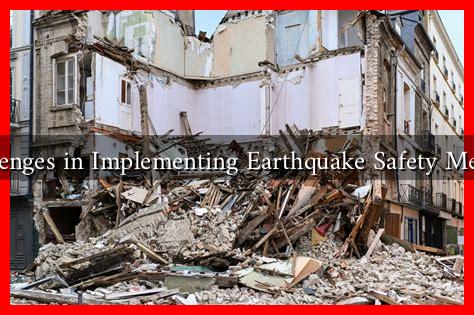-
Table of Contents
What Are the Challenges in Implementing Earthquake Safety Measures in Lebanon?
Lebanon, a country situated along the complex tectonic boundaries of the Eastern Mediterranean, is highly susceptible to seismic activity. The 2006 earthquake in the region served as a stark reminder of the potential devastation that can occur. Despite the known risks, implementing effective earthquake safety measures in Lebanon faces numerous challenges. This article explores these challenges, providing insights into the socio-political, economic, and infrastructural factors that hinder progress.
The Seismic Landscape of Lebanon
Lebanon is located near the Dead Sea Transform fault system, which is responsible for significant seismic activity. Historical records indicate that the country has experienced several major earthquakes, with the most notable being the 551 AD earthquake that devastated Beirut.
. According to the Lebanese National Center for Geophysics, the country experiences minor tremors regularly, with the potential for larger, more destructive quakes.
Challenges in Implementing Earthquake Safety Measures
Despite the evident risks, Lebanon faces several challenges in implementing effective earthquake safety measures:
- Political Instability: Lebanon has a history of political turmoil, which often leads to inconsistent governance. The lack of a stable government hampers the development and enforcement of building codes and safety regulations.
- Economic Constraints: The Lebanese economy has faced significant challenges, including a financial crisis that began in 2019. Limited financial resources restrict the government’s ability to invest in infrastructure improvements and public safety initiatives.
- Inadequate Infrastructure: Many buildings in Lebanon, particularly older structures, do not meet modern seismic safety standards. Retrofitting these buildings is often cost-prohibitive, and new construction frequently ignores best practices due to a lack of enforcement.
- Public Awareness and Education: There is a general lack of awareness among the public regarding earthquake preparedness. Educational campaigns are necessary to inform citizens about safety measures, but these are often underfunded or overlooked.
- Corruption and Mismanagement: Corruption within various levels of government can lead to misallocation of resources and ineffective implementation of safety measures. This undermines public trust and complicates efforts to improve safety standards.
Case Studies and Examples
Several case studies illustrate the challenges Lebanon faces in earthquake preparedness:
- The 2006 Earthquake: Following the 2006 earthquake, many buildings were found to be structurally unsound. The lack of enforcement of building codes led to widespread damage, highlighting the need for stricter regulations.
- Beirut’s Urban Development: In Beirut, rapid urbanization has resulted in the construction of high-rise buildings without adequate seismic assessments. The 2020 Beirut explosion further complicated the situation, as many buildings were already vulnerable.
International Support and Initiatives
International organizations have recognized the need for improved earthquake safety measures in Lebanon. Initiatives such as the United Nations Development Programme (UNDP) have aimed to enhance disaster risk reduction strategies. However, these efforts often face challenges due to local governance issues and the need for sustainable funding.
Moving Forward: Recommendations for Improvement
To address the challenges in implementing earthquake safety measures, several recommendations can be made:
- Strengthening Governance: Establishing a stable government that prioritizes disaster risk reduction can lead to more effective policy implementation.
- Investing in Infrastructure: Allocating funds for retrofitting existing buildings and ensuring new constructions meet seismic standards is crucial.
- Enhancing Public Awareness: Launching educational campaigns to inform citizens about earthquake preparedness can empower communities to take proactive measures.
- Encouraging International Collaboration: Engaging with international organizations for technical and financial support can help bolster local efforts.
Conclusion
Implementing earthquake safety measures in Lebanon is fraught with challenges stemming from political instability, economic constraints, inadequate infrastructure, and public awareness issues. However, by addressing these challenges through governance reform, infrastructure investment, public education, and international collaboration, Lebanon can enhance its resilience to seismic events. The stakes are high, and proactive measures are essential to safeguard lives and property in a country that remains vulnerable to the forces of nature.
For more information on earthquake preparedness and safety measures, you can visit the United Nations Office for Disaster Risk Reduction.





